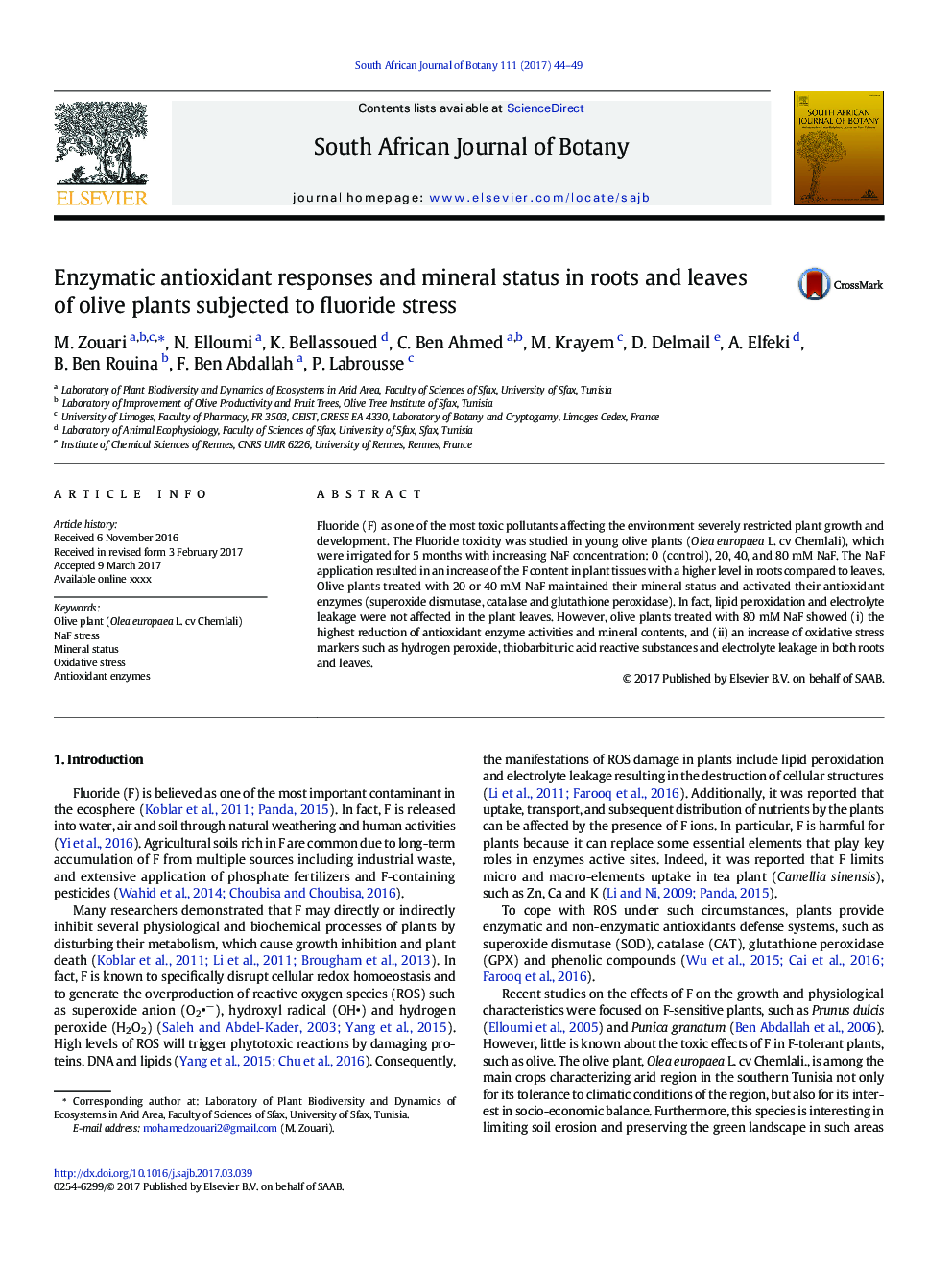| Article ID | Journal | Published Year | Pages | File Type |
|---|---|---|---|---|
| 5762945 | South African Journal of Botany | 2017 | 6 Pages |
Abstract
Fluoride (F) as one of the most toxic pollutants affecting the environment severely restricted plant growth and development. The Fluoride toxicity was studied in young olive plants (Olea europaea L. cv Chemlali), which were irrigated for 5Â months with increasing NaF concentration: 0 (control), 20, 40, and 80Â mM NaF. The NaF application resulted in an increase of the F content in plant tissues with a higher level in roots compared to leaves. Olive plants treated with 20 or 40Â mM NaF maintained their mineral status and activated their antioxidant enzymes (superoxide dismutase, catalase and glutathione peroxidase). In fact, lipid peroxidation and electrolyte leakage were not affected in the plant leaves. However, olive plants treated with 80Â mM NaF showed (i) the highest reduction of antioxidant enzyme activities and mineral contents, and (ii) an increase of oxidative stress markers such as hydrogen peroxide, thiobarbituric acid reactive substances and electrolyte leakage in both roots and leaves.
Related Topics
Life Sciences
Agricultural and Biological Sciences
Agronomy and Crop Science
Authors
M. Zouari, N. Elloumi, K. Bellassoued, C. Ben Ahmed, M. Krayem, D. Delmail, A. Elfeki, B. Ben Rouina, F. Ben Abdallah, P. Labrousse,
